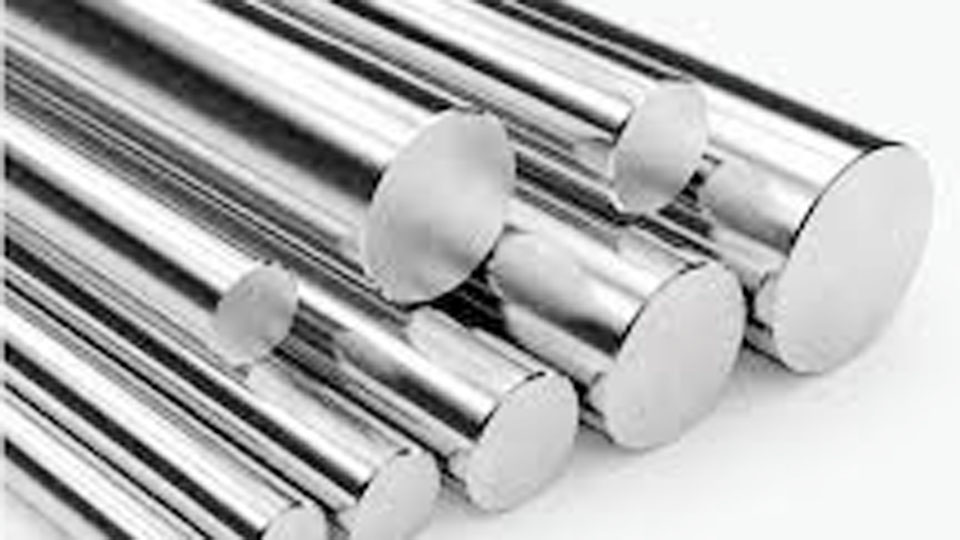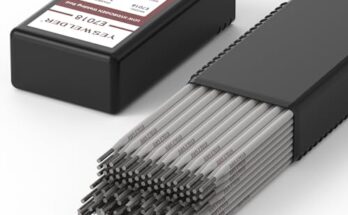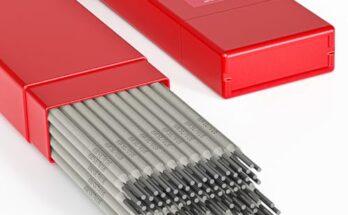Welding chrome plated steel isn’t something I recommend jumping into without some careful planning. I remember the first time I tried it. Let’s just say it didn’t go as planned. I ended up learning a lot about how chrome reacts under high heat and what precautions are absolutely necessary.
If you’ve been wondering whether you can weld chrome plated steel, the short answer is yes—but it’s not straightforward. And that’s exactly what we’ll talk about here.

Photo by chromearod
I’ll walk you through what chrome plated steel actually is, what challenges it brings to the table, and how you can approach welding it the right way. If you’re a beginner or an experienced welder, this guide should help you make better, safer decisions.
Understanding the Chrome Plated Steel
Before we even touch a welding torch, let’s talk about what chrome plated steel actually is. Basically, it’s just regular steel that’s been coated with a thin layer of chromium through a process called electroplating. The goal here is to improve corrosion resistance, make it more visually appealing, and increase surface hardness.
The chrome layer is really thin—usually just a few microns thick—but it’s chemically different from the steel underneath. And when you apply intense heat, like during welding, that chrome layer can become a problem.
Why Welding Chrome Plated Steel Is Challenging
Welding steel by itself is one thing. But when you throw in a coating of chrome, things start to get complicated.
Here’s why:
- Toxic Fumes: When you heat chrome, it can release hexavalent chromium fumes. These are highly toxic and pose serious health risks if inhaled.
- Cracking Risk: Chrome is brittle. During welding, it can crack or flake off, leading to weld defects.
- Contamination: The chrome can mix with your weld pool, causing poor fusion and weakening the joint.
- Arc Stability Issues: The plating may interfere with stable arc performance.
So yes, welding chrome plated steel is definitely possible, but you need to take precautions. Otherwise, you’re going to have a bad time.
When Might You Need to Weld Chrome Plated Steel?
In real life, you might run into this situation more often than you think. Here are a few examples:
- Auto repair jobs
- Motorcycle parts
- Furniture frames
- Gym equipment
- Industrial fixtures
These items often come with chrome plating for aesthetics and protection. But accidents happen, and sometimes parts need to be repaired or modified. That’s when knowing how to weld chrome plated steel comes in handy.
Should You Remove the Chrome Before Welding?
Absolutely. If you take one piece of advice from me, let it be this: always remove the chrome before you weld.
Here’s why:
- It reduces toxic fumes
- Improves weld quality
- Helps avoid cracking and porosity
- Makes the process safer for everyone involved
There are a few ways to remove the chrome:
| Method | Description | Best For |
|---|---|---|
| Grinding | Using an angle grinder with a flap disc or belt | Small surface areas and quick jobs |
| Sandblasting | Abrasive blasting to strip off the layer | Uniform surface preparation |
| Chemical stripping | Acid bath or commercial chrome remover | Precision parts, delicate areas |
I personally go for grinding if it’s a small part. It’s fast and effective. But for complex shapes or delicate components, chemical stripping might be better. Just be sure to follow safety instructions if you’re working with chemicals.
What Welding Method Is Best for Chrome Plated Steel?
You’ve got a few options when it comes to welding methods. The best one depends on what you’re trying to achieve.
TIG Welding (Tungsten Inert Gas)
This is my favorite method when precision matters. TIG gives you excellent control, and it’s perfect for thin materials. Since chrome plated steel parts are often used for looks, TIG helps you keep the welds neat and clean.
Pros:
- Clean welds
- Low spatter
- Precision
Cons:
- Slower
- Requires skill
MIG Welding (Metal Inert Gas)
If speed is more important than precision, MIG is a solid choice. It’s beginner-friendly and works great on thicker sections once the chrome is removed.
Pros:
- Fast
- Easier for beginners
Cons:
- More spatter
- Not as clean-looking
Stick Welding (SMAW)
This can work too, especially in outdoor or rough environments. Just be aware that it’s less precise and tends to produce more slag.
Pros:
- Good for heavy-duty jobs
- Works in less controlled environments
Cons:
- Messier
- More post-weld cleanup
How to Prepare Chrome Plated Steel for Welding
Preparation is everything when it comes to welding chrome plated steel. Skipping steps here is a recipe for disaster.
Here’s what I usually do:
- Clean the Area: Use a wire brush to remove dirt, oil, or debris.
- Remove the Chrome: Grind or strip the chrome at least one inch around the weld zone.
- Preheat If Necessary: If you’re working with thicker materials, a bit of preheating (around 200–300°F) helps reduce the chance of cracking.
- Choose the Right Filler Metal: For TIG, ER70S-2 or ER70S-6 usually works well for carbon steel. Match it to your base material.
- Proper Ventilation: Always weld in a well-ventilated area or use a fume extractor to avoid inhaling toxic chromium fumes.
Welding Tips for Chrome Plated Steel
Over the years, I’ve picked up a few tricks that make the process smoother:
- Start with a short arc: This helps keep things stable and reduces heat distortion.
- Use a backstep technique: Weld a short section, then go back and weld the next segment. This helps control warping and heat input.
- Slow down: Especially with TIG welding. Take your time for a cleaner bead.
- Post-weld grind and polish: The heat-affected zone may look discolored. Use a flap disc to restore the finish if aesthetics are important.
- Test first: If possible, do a practice weld on scrap material with the same chrome coating. It helps dial in your settings.
Post-Weld Considerations
After welding, you might notice discoloration or a dull surface. That’s totally normal. The high heat affects the surrounding area, especially when chrome is involved.
If the part is supposed to look good, you can do a few things:
- Light grinding and polishing
- Re-chroming (for restoration jobs)
- Powder coating if chrome isn’t required anymore
Inspect your weld for cracks, porosity, or incomplete fusion. Chrome can be sneaky and hide problems inside the weld.
Is Re-Chroming Necessary After Welding?
That really depends on the application. If it’s a decorative piece or something exposed to the elements, re-chroming is usually a good idea. Welding burns away the protective chrome, so you’ll need to restore it to prevent rust.
If it’s a hidden bracket or internal component, you might skip it. Just apply a protective paint or sealant to the welded area to avoid corrosion.
Safety Tips When Welding Chrome Plated Steel
This part is no joke. Welding chrome comes with unique hazards. Here’s how to protect yourself:
- Wear a respirator: Especially when grinding or welding. Use a cartridge rated for metal fumes.
- Work in a ventilated area: Fume extraction arms are super helpful.
- Use safety glasses: Chrome chips can fly during prep work.
- Wear gloves and flame-resistant clothing: Always.
- Don’t rush: One bad weld can lead to structural failure or health problems.
Your health and safety should always come first.
Real-World Example From My Workshop
I once had to repair a chrome-plated dumbbell handle. It had a hairline crack near the middle, and the client wanted it fixed without ruining the appearance.
I ground off the chrome in a small area, TIG welded it slowly with ER70S-6 filler, and then polished the entire thing. It wasn’t perfect, but you could barely tell where the weld was.
That job reminded me just how delicate chrome plated steel can be. But with care and patience, you can make it work.
Conclusion
So, can you weld chrome plated steel? Yes, absolutely. But it takes preparation, the right tools, and a lot of respect for what chrome can do when it heats up.
Always remove the chrome in the weld zone, protect yourself from the fumes, and take your time with the weld.
I’ve learned that rushing this process only leads to headaches. Do it right, and you’ll get a solid, safe, and good-looking result.
Whether you’re fixing a gym rack or working on a classic car, knowing how to weld chrome plated steel is a valuable skill. And once you get it down, it opens up a lot more doors in the metalworking world.
Frequently Asked Questions
Can you weld chrome plated steel without removing the chrome?
No, it’s not recommended. The chrome can contaminate the weld and release toxic fumes. Always remove it first.
What welding rod should I use for chrome plated steel?
That depends on the base metal. For most carbon steel, ER70S-2 or ER70S-6 works well. Match your filler to the steel underneath the chrome.
Is it safe to weld chrome plated parts?
It can be, as long as you remove the chrome, use proper ventilation, and wear protective gear. Never weld chrome plated steel in a confined space without a fume extractor.
Can you MIG weld chrome plated steel?
Yes, but you still need to remove the chrome layer. MIG welding works well for faster jobs on thicker parts.
What happens if you don’t remove the chrome before welding?
You risk weld contamination, porosity, poor fusion, and exposure to harmful fumes. The weld will likely be weak and unsafe.
Do I have to re-chrome the part after welding?
Only if appearance or corrosion resistance matters. For structural or hidden parts, a protective coating might be enough.
Can stainless steel be chrome plated and welded?
Yes, but it adds more complexity. You’ll need to deal with both the stainless and chrome layers, which requires extra care and skill.







